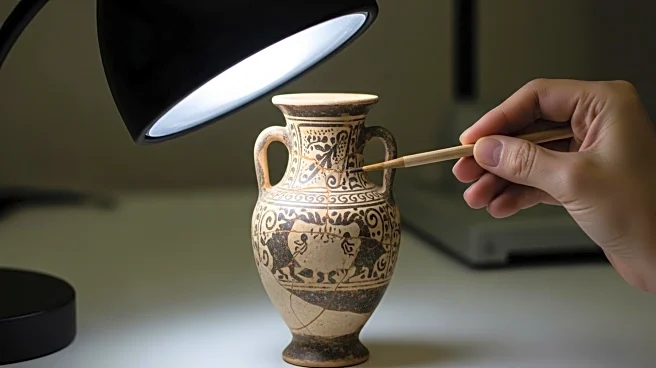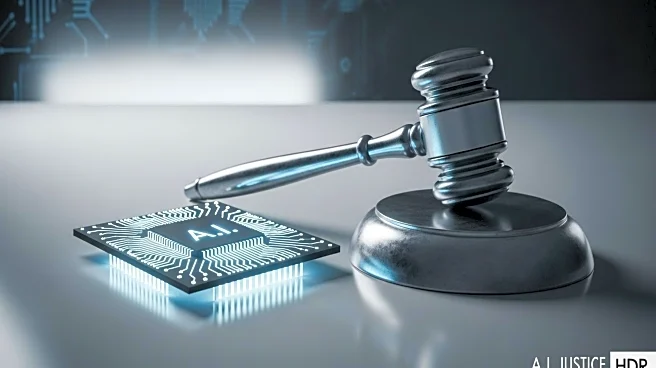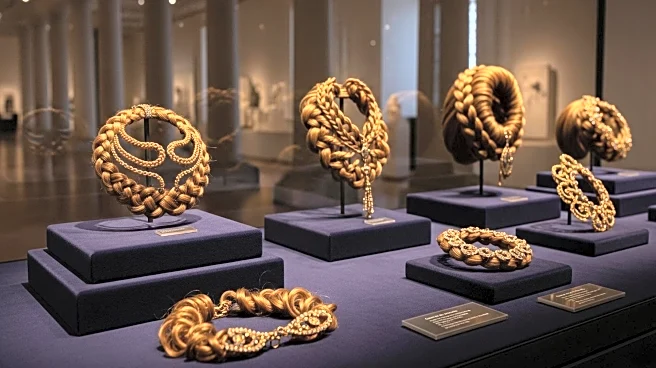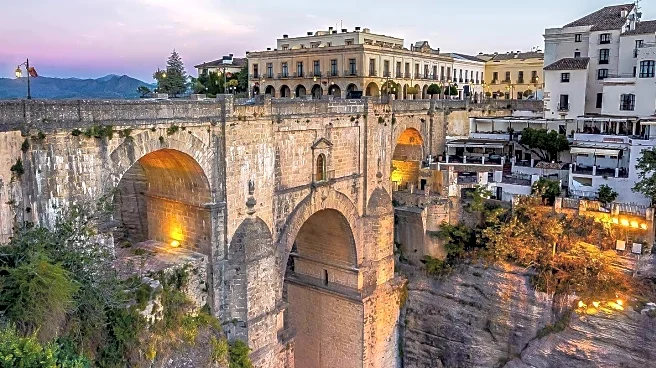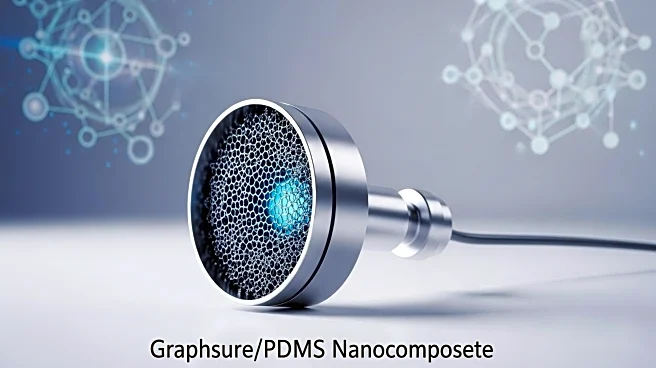What's Happening?
A recent study published in Nature has introduced a novel automated mural restoration method that combines semi-supervised segmentation and prompt-guided diffusion inpainting. This approach aims to address the challenges of preserving cultural heritage, particularly in the restoration of ancient murals. The study utilized a diverse dataset of mural images from various historical periods, including the Northern Dynasties and Song-Yuan periods, to evaluate the effectiveness of the method. The restoration process involves identifying damaged areas using advanced segmentation techniques and repairing them with a text-based inpainting strategy. The method demonstrated superior performance in maintaining the original style and details of the murals compared to existing technologies.
Why It's Important?
The development of this automated restoration method is significant for the field of cultural heritage preservation, as it offers a more accurate and consistent approach to restoring ancient artworks. By preserving the artistic integrity of murals, this technology can help maintain historical and cultural narratives embedded in these artworks. The method's ability to handle complex mural damages with high precision could benefit museums, conservationists, and cultural institutions tasked with preserving historical artifacts. Additionally, the integration of advanced image processing techniques and prompt engineering highlights the potential for technological innovation in heritage conservation.
What's Next?
Future applications of this restoration method could extend to other forms of cultural heritage preservation, including old photographs and diverse mural styles from different cultural backgrounds. The study suggests that further research could focus on enhancing the adaptability of the method to various artistic styles and improving its generalization capabilities. This could involve constructing more comprehensive datasets and integrating adaptive generative models. The ongoing development of this technology may lead to broader applications in preserving cultural heritage across different regions and historical contexts.
Beyond the Headlines
The ethical implications of using automated methods in cultural heritage preservation are noteworthy. While technology can enhance restoration accuracy, it also raises questions about the authenticity and originality of restored artworks. The balance between technological intervention and maintaining historical authenticity is a critical consideration for conservators. Additionally, the method's reliance on advanced computing resources highlights the need for accessible technology solutions in heritage preservation, particularly for institutions with limited resources.

